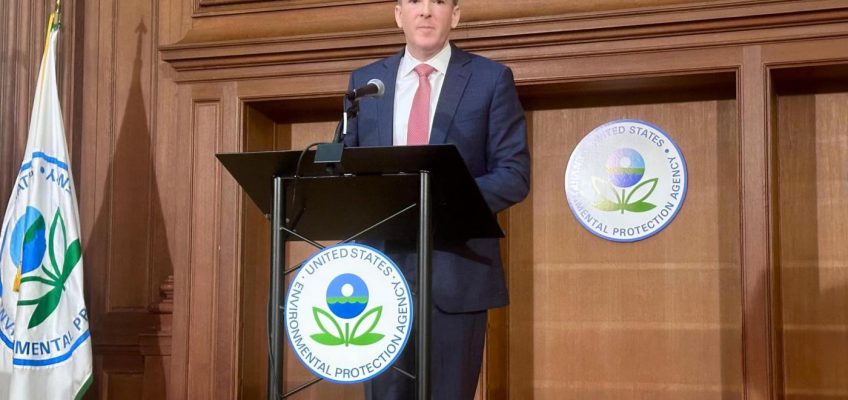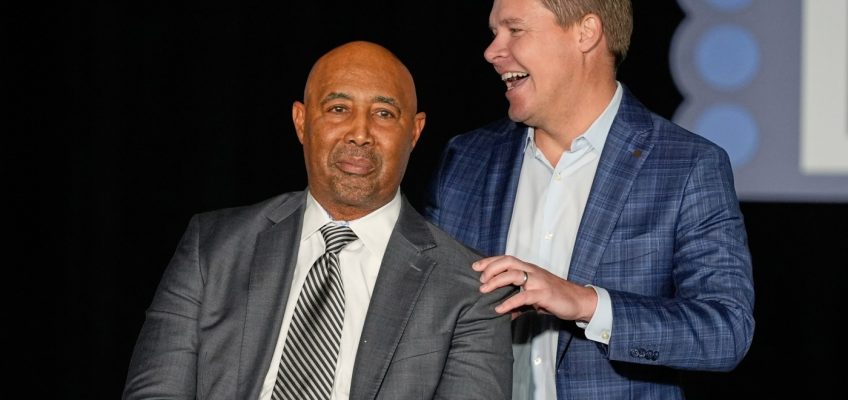By SETH BORENSTEIN
WASHINGTON (AP) — The Environmental Protection Agency has removed any mention of fossil fuels — the main driver of global warming — from its popular online page explaining the causes of climate change. Now it only mentions natural phenomena, even though scientists calculate that nearly all of the warming is due to human activity.
DOJ ends monitoring of illegal dumping in Houston in retreat from environmental justice
UN says world must jointly tackle issues of climate change, pollution, biodiversity and land loss
Georgia O’Keeffe’s views of the New Mexico desert will be preserved with conservation plan
The holiday shopping season comes with tons of extra emissions. Here’s how to do it sustainably
Federal judge throws out Trump order blocking development of wind energy
Sometime in the past few days or weeks, EPA altered some but not all of its climate change webpages, de-emphasizing and even deleting references to the burning of coal, oil and natural gas, which scientists say is the overwhelming cause of climate change. The website’s causes of climate page mentions changes in Earth’s orbit, solar activity, Earth’s reflectivity, volcanoes and natural carbon dioxide changes, but not the burning of fossil fuels. Seven scientists and three former EPA officials tell The Associated Press that this is misleading and harmful.
“Now it is completely wrong,” said University of California climate scientist Daniel Swain, who also noted that impacts, risks and indicators of climate change on the EPA site are now broken links. “This was a tool that I know for a fact that a lot of educators used and a lot of people. It was actually one of the best designed easy access climate change information websites for the U.S.”
Earlier this year, the Trump Administration removed the national climate assessment from government websites.
“It is outrageous that our government is hiding information and lying,” said former Obama National Oceanic and Atmospheric Administration chief and Oregon State oceanographer Jane Lubchenco. “People have a right to know the truth about the things that affect their health and safety, and the government has a responsibility to tell the truth.”
An October version of the same EPA page, saved by the internet Wayback Machine, said: “Since the Industrial Revolution, human activities have released large amounts of carbon dioxide and other greenhouse gases into the atmosphere, which has changed the earth’s climate. Natural processes, such as changes in the sun’s energy and volcanic eruptions, also affect the Earth’s climate. However, they do not explain the warming that we have observed over the last century.”
That now reads: “Natural processes are always influencing the earth’s climate and can explain climate changes prior to the Industrial Revolution in the 1700s. However, recent climate changes cannot be explained by natural causes alone.”
“Unlike the previous administration, the Trump EPA is focused on protecting human health and the environment while Powering the Great American Comeback, not left-wing political agendas,” said Brigit Hirsch, EPA spokesperson, in an email. “As such, this agency no longer takes marching orders from the climate cult. Plus, for all the pearl-clutchers out there, the website is archived and available to the public.”
Clicking on “explore climate change resources” on the EPA archived website leads to an error message that says: “This XML file does not appear to have any style information associated with it.”
Former Republican Governor Christie Todd Whitman, who was EPA administrator under George W. Bush, said, “You can refuse to talk about it, but it doesn’t make it go away. And we’re seeing it. Everybody’s seeing it.”
“We look ridiculous, quite frankly,” Whitman told The Associated Press in an interview. “The rest of the world understands this is happening and they’re taking steps… And we’re just going backwards. We’re knocking ourselves back into the Stone Age.”
Democratic EPA chief Gina McCarthy blasted current EPA chief Lee Zeldin, calling him “a wolf in sheep’s clothing, actively spiking any attempt to protect our health, well-being and precious natural resources.”
Nearly 100% of the warming the world is now experiencing is from human activity, and without that, the Earth would be cooling and dropping in temperatures until the Industrial Revolution, Swain and other scientists said. The EPA listed natural causes “might be causing a very tiny amount of warming or cooling at the moment,” he said.
Marcia McNutt, a geophysicist and president of the National Academy of Sciences, said that there is consensus among experts from the National Academy of Sciences, Engineering, and Medicine, or NASEM, on the causes of climate change.
“Numerous NASEM reports from the nation’s leading scientists confirm that the climate is changing as a result of human activities,” McNutt said. “Even the EPA acknowledges that natural causes cannot explain the current changes in climate. It is important that the public be presented with all of the facts.”
Former EPA climate advisor Jeremy Symons, now a senior advisor for Environmental Protection Network of former EPA officials, said: “Ignoring fossil fuel pollution as the driving force behind the climate changes we have seen in our lifetime is like pretending cigarettes don’t cause lung cancer.”
Michael Phillis contributed to this report.
The Associated Press’ climate and environmental coverage receives financial support from multiple private foundations. AP is solely responsible for all content. Find AP’s standards for working with philanthropies, a list of supporters and funded coverage areas at AP.org.




